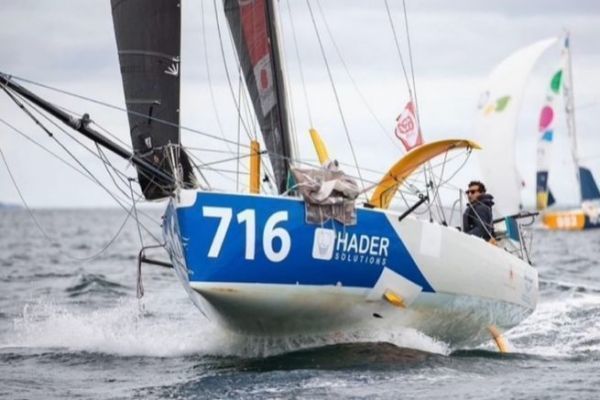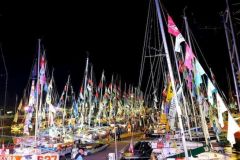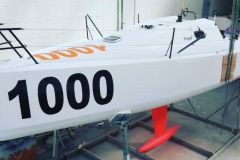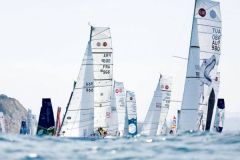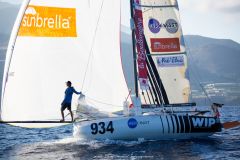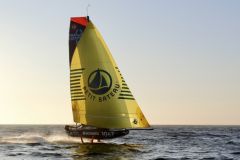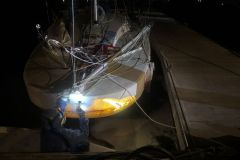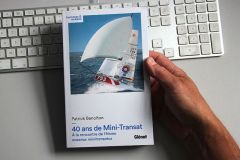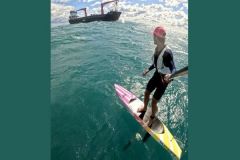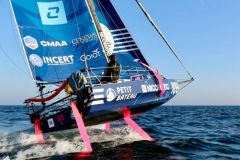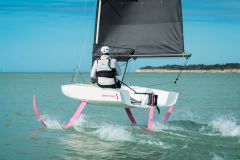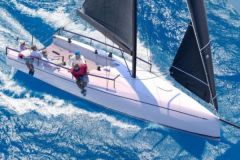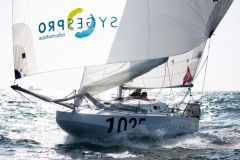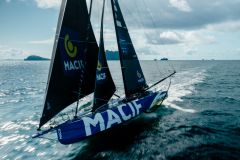Upgrading a proto from 2008
After 10 years' experience with a Swiss shipyard, Benoît took the plunge and acquired his first mini in 2020. Well-born, this proto finished in 3rd place e place in the 2010 mini, before a string of podium finishes with successive owners.

"I acquired the 716 from Fabio Muzzolini with the idea of racing the Mini 2023. I left my native Switzerland and moved to La Turballe to carry out this project, which resulted in a 17 e place in the prototype rankings. But before setting off on the transatlantic race, I asked myself what I should do next. I wanted to do the next Mini, but on a higher-performance proto. But budgets for a new boat have skyrocketed, whereas the 716 remains a benchmark, well-built and with a great track record ."
The idea of upgrading the 716 is gaining ground in Benoît's mind, especially as he's not the only one faced with the challenge of maintaining an old boat at a high level of performance.
Fitting foils to an old hull
Benoît contacted the Lombard firm, which employs Henry-Paul Schipman, the architect who designed the boat in 2008. "He was immediately excited by the project, to take over the lead on the next stage of this proto's career. We went for a system similar to the one installed on the Tartine proto, which was fitted with two large C-shaped foils."
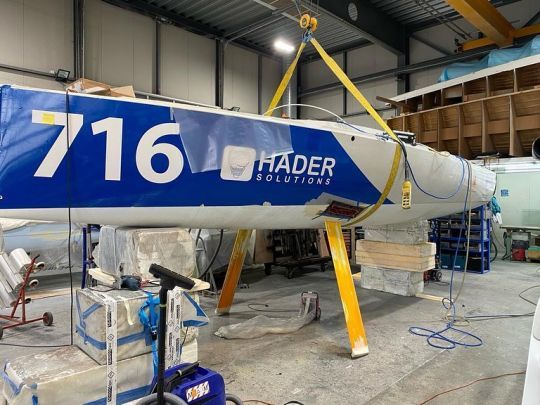
"So I bought back the molds from the 945, before looking for a Swiss shipyard capable of carrying out the transformation. MB Composit ticked all the boxes for manufacturing the profiles and modifying the hull."
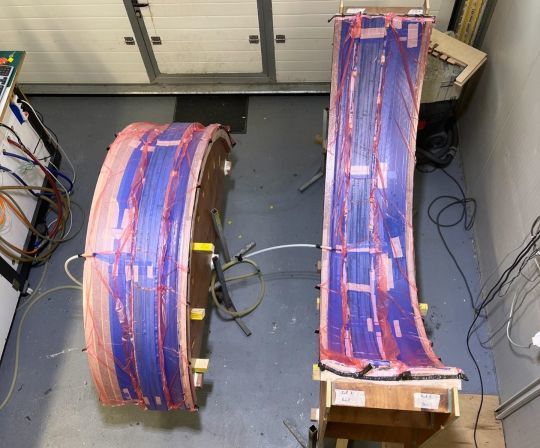
"The first foil was released in September, and the 2nd e in November, while I was in the middle of the Atlantic. The boat was transferred to Switzerland in mid-January and I picked it up at the end of April to bring it back to La Turballe."
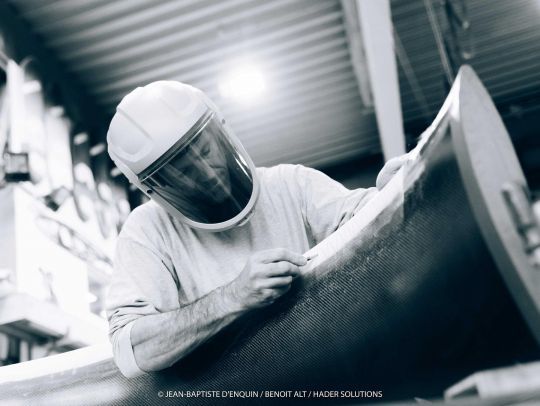
But it's not enough to simply add foils to improve a proto. We had to rethink the entire rigging and other appendages of a sailboat destined to fly. " The daggerboards have been moved closer to the mast, so that they are in line with the foils. We reinforced the rudders, but without adding any load-bearing surfaces. "
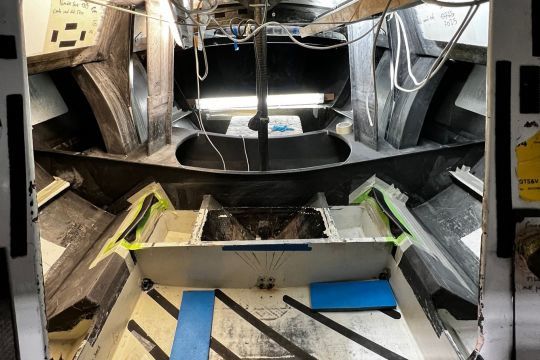
What's the bottom line?
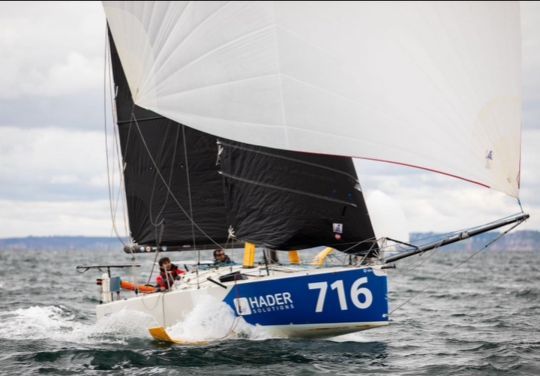
In total transparency, Benoît has provided us with the various figures following his modifications: "In total, with the addition of wells and several reinforcements, we added 80 kg to the 716, or around 10% of its original displacement. In very light airs, the 716 lost perf, but gained speed in all other conditions. We took the start on a boat then in its discovery phase, and finished in 10th place e place. In terms of budget, this transformation required a budget of ?130,000, to which must be added the ?70,000 for the purchase of the boat. By way of comparison, a new foiling proto can cost up to ?300,000."
Apart from the need to reduce his budget, it's an initiative that's to be applauded, as it involves trying to maintain a high level of performance on a hull designed 16 years ago. Benoît was unable to complete the Les Sables Les Açores race due to a close encounter with killer whales, but there's no doubt he'll be doing his utmost to demonstrate the potential of his "new 716".
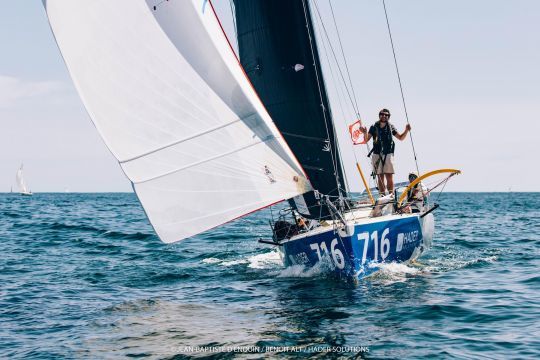

 /
/ 